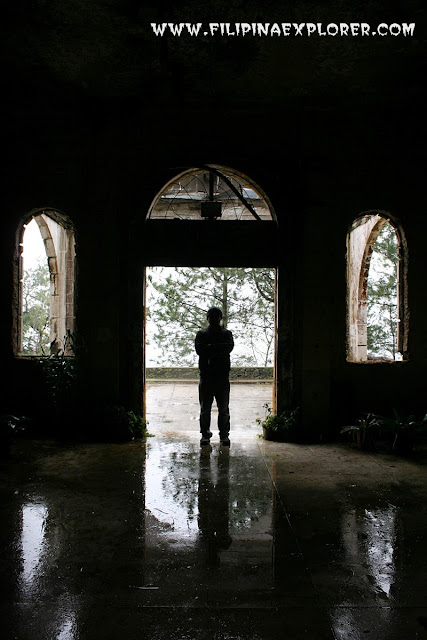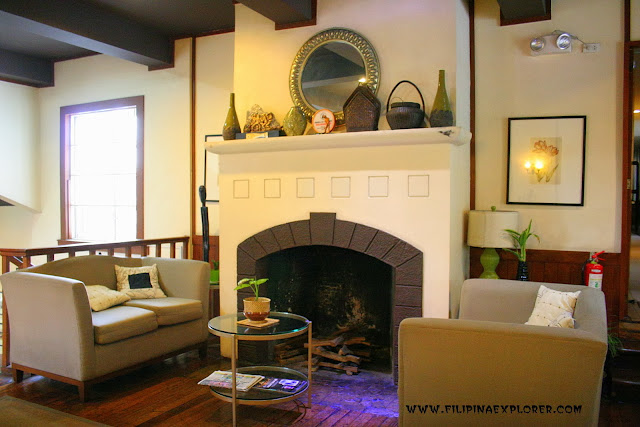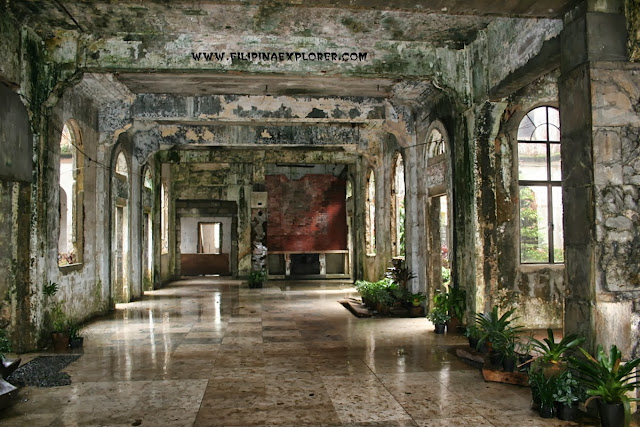 |
| Diplomat Hotel. |
- The Diplomat Hotel
Nearly thirty years after, it was transformed into a hotel managed by psychic healer Tony Agpaoa, whose terminal patients frequently boarded the hotel. His death in the 80s halted all operations, turning it into the abandoned, paint-chipped and ghostly hotel it is now.
Since then, residents have claimed to hear screams, clanking utensils and banging doors coming from the hotel. It is purported that these are the collective spirits of war prisoners, the terminally ill and all lost souls who have once made Diplomat their home. Others like our Manong Driver, claim it may be those of taxi drivers who were victims of murder and holdup along Diplomat Road (Apparently, robbery is rampant here especially during the night, and taxi drivers are the most common victims). University of Baguio students also told zis mom that a nurse recently dove to her death from the window on the second floor.
An 80-million redevelopment plan to transform Diplomat Hotel into an event venue was proposed by the Baguio government last year.
- Laperal House
It was once owned by the affluent Laperal family, and was seized by the Japanese during WWII. Rumor has it that the Laperal head of the family died here of an accident by the stairs, and he, along with the entire family and a girl in white frequenting the steps at the front porch, still lurk the premises to this day.
 |
| Stairs were a girl in white is said to be spotted at night. |
 |
| Lookey at the window! |
A few years back the house was purchased by PAL magnate Lucio Tan, and has since been
transformed into a museum showcasing Art Deco and Igorot antiques. The exterior was refurbished but still remains eerie. If you wish to step inside, the house is open for exhibits on weekends. We went on a weekday and were allowed only to take photos from the outside by the caretakers.
Spine-tingling factor: 4 out of 5 (from the outside; might be higher if we actually went inside).
- Casa Vallejo Hotel
The large mirror at the lobby is said to be a portal to the other side, although when I looked all I saw were zits and freckles. The secluded and dark corridor leading to the ballroom is said to be haunted as well. Guests also claim to hear the sound of wood creaking on silent nights, though that could easily be due to Casa Vallejo’s wooden architecture.
 |
| That mirror is said to be a portal to another world. |
 |
| Haunted corridors? |
Do you have ghostly experiences in Baguio? Share them below!
Read the rest of the Baguio trip series:
Baguio’s Charm and A First Teaching Engagement
Review: Casa Vallejo Hotel, Baguio City
Mt. Cloud Bookshop, North Haven Spa and Cinematheque at Casa Vallejo, Baguio City
Baguio’s Tam-Awan Village: Nature and Art Haven
La Trinidad, Benguet Side Trip: Bell Church and Strawberry Fields
Hill Station, Baguio City: Fine Dining Without Frills
Baguio City Tour: Lourdes Grotto, Good Shepherd, The Mansion, Wright Park and Mines View Park
SM Baguio’s Pretty Skyline, Baguio Cathedral, and A Little Known Bulalohan













